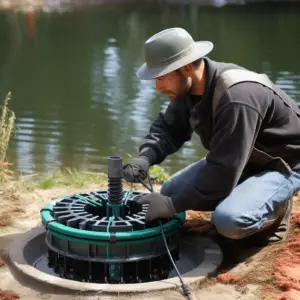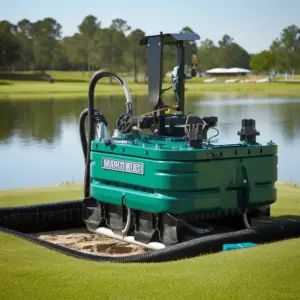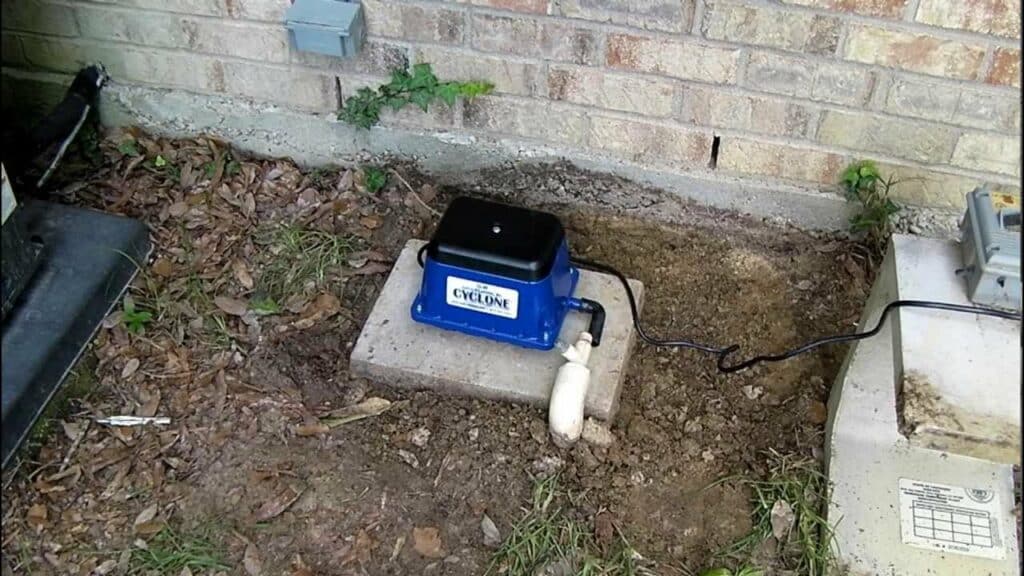Septic Aerators, An aerobic septic system design is the most common type of septic system that households have today. It’s a non-electrical powered system that can break down solid waste and wastewater in the septic tank.
The presence of an aerator augments the development of aerobic bacteria that help break down waste, readying it for the drain field for further treatment or dispersal. An aerator can be a great addition to septic systems with drain field problems.
At times, the passages of bits of solid waste into the drain field can cause catastrophic problems that compromise the functions of the drain field. However, with more bacteria in the septic tank that can break down the waste, the drain field will have an easier time distributing the effluent.
Table of Contents
Should Septic Aerators Run All the Time?

The answer is yes. The aerator should run 24/7 and should continuously provide much-needed oxygen inside the septic tank of the aerobic system. Note that the bacterias in the aerobic system need air to survive. Turning off the aerator when you think the septic system isn’t functioning will definitely kill the bacteria responsible for breaking down waste.
The point here is for the aerobic bacteria to clean up the fluid inside the septic tank. It should also make its way to the drain field to clear away the bio-mat formed over the years. The bio-mat, in simple terms, is the thing that blocks the tank leach field and prevents it from working properly.
Will this Affect the Electric Bill?
The aerator running 24/7 non-stop should not affect your electric bill that much. On average, running it 24/7 should cost you not more than $10. In case your electric bills are too high, that might be due to something else than the aerator.
The device itself operates on low-power capacity. Thus, it shouldn’t cost much even if it runs 24 hours throughout the week.
That said, however, it’s important to note that having an aerator in place doesn’t mean that the rest of the solid waste will break and eventually flow through the drain field. Your septic tank still requires to be pumped periodically or as scheduled.
Otherwise, you could fall into an even bigger problem that can cost thousands of dollars. An aerator often eliminates the need for natural-and chemical-based additives that will develop usable bacteria inside the tank.
How Septic Aerators Work
One essential part of understanding when your aerator is not functioning is first to understand how it works. We’ve just discussed the design and purpose of aerators in an aerobic septic system.
Aerators speed up the process of breaking down solids in your system by providing oxygen which fosters the growth of the bacteria that breaks down and digests the wastewater inside the holding tank.
The higher the concentration of these good bacteria in your septic system, the more efficient and thoroughly the system will clear wastewater. While an aerobic septic system disperses cleaner effluent, a much smaller additional treatment system is required than would be for an aerobic system.
What Happens When Aerators Stop Working
If your septic tank’s aerator fails, your system will go from aerobic to anaerobic, which is slower and less effective in breaking down materials.
The system’s effluent will be more like raw sewage than aerobic septic’s pure, odorless discharge.
Aerator septic systems have smaller secondary treatment systems, or none at all, therefore they either dump raw sewage into the environment or into the secondary treatment.
If there is a secondary treatment system, it will quickly become overwhelmed and suffer catastrophic failure. That’s why it’s critically important to pay close attention to the signs that your aerator is not functioning properly.
The clearest sign your aerator has failed is an overwhelming unpleasant odor coming from where your system disperses, whether into a secondary treatment system or directly into the drain field.
Common Aerator Problems
Usually, the first sign that there’s something wrong with your septic aerator is the system alarm sounding. Sorry to say, there are a number of reasons your alarm may sound, not of which are directly related to the aerator.
The septic alarm is more like the “check engine” light on your car and similar to your car, figuring out the cause often requires the help of a professional. Although not all associated with faulty aerator, some of the most common causes of the septic alarm sounding are:
Loss of Power
This is probably the easiest problem to fix. It is often caused by a tripped circuit breaker. However, if the problem keeps occurring, it could be a sign of a bigger electrical problem, which should be investigated preferably immediately.
Sewage Pump Failure
When the sewage pump fails, it will cause the water in your system to rise, signaling your septic tank. You may need to repair or replace the sewage pump to restore your system to proper functionality.
Inadequate Air Pressure

Sufficient air pressure is necessary for your aerator to adequately oxygenate your system. In the event that your system’s air pressure isn’t enough, it often signals a need for replacement or repair of the system’s aerator.
Clogged Diffuser
Being the outlet for your system, a clogged diffuser means that the system will not be able to discharge the fluids held by the system. So if your septic alarm sounds, check to determine whether the problem is simply a tripped circuit breaker. If that’s not the case, (or the breaker keeps on tripping) you may need to have your system serviced immediately. Problems with aerobic systems tend to compound quickly, so do not hesitate to call.
Broken Timer
The time in your aerobic system helps to keep water in place until the effluent is clear and clean enough for your system’s next phase, whether being directly released or transferred to a secondary treatment system.


